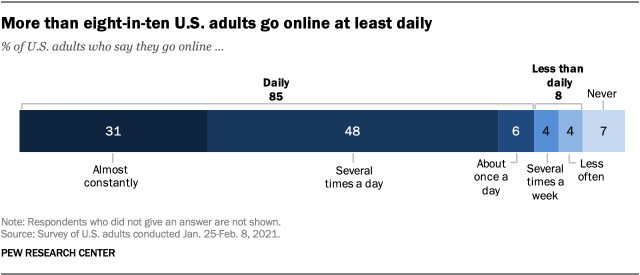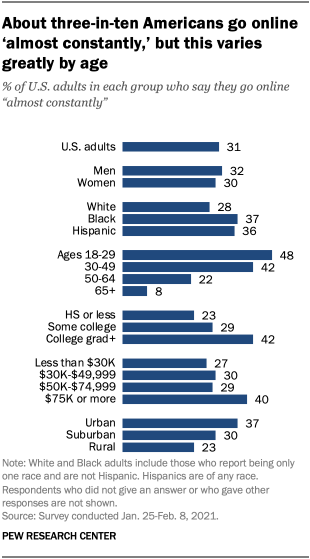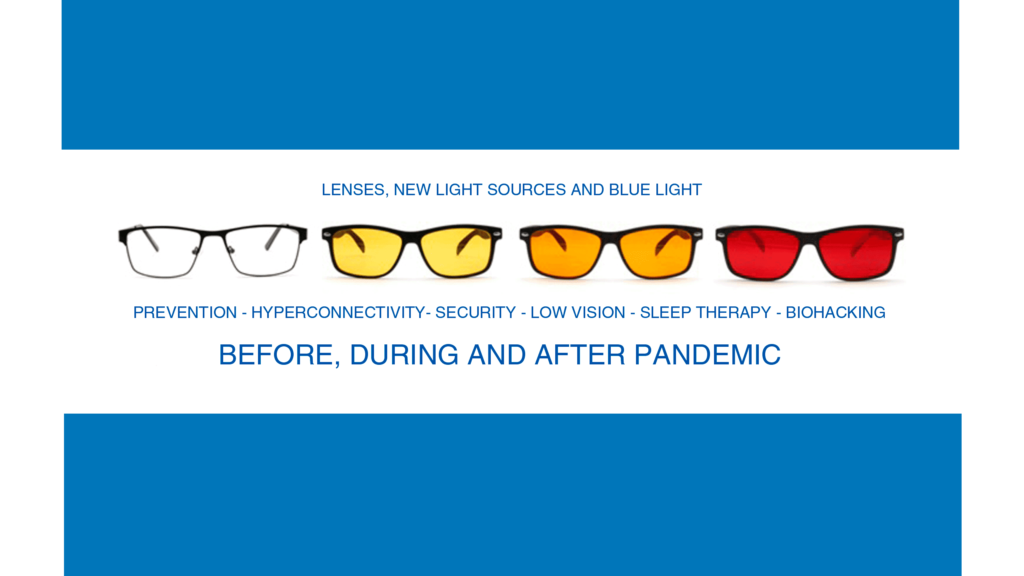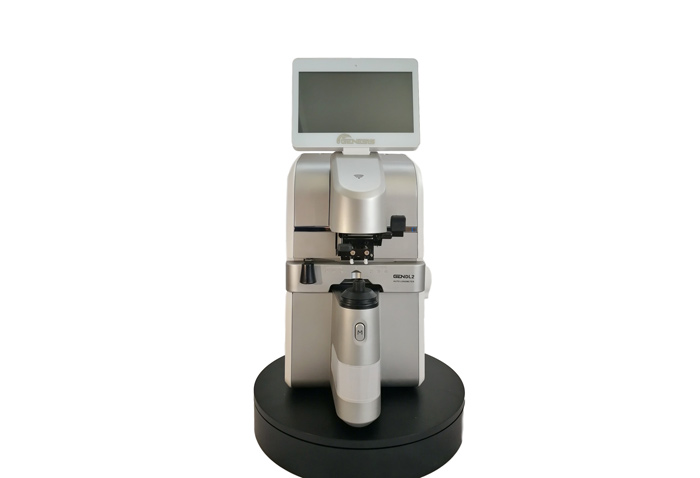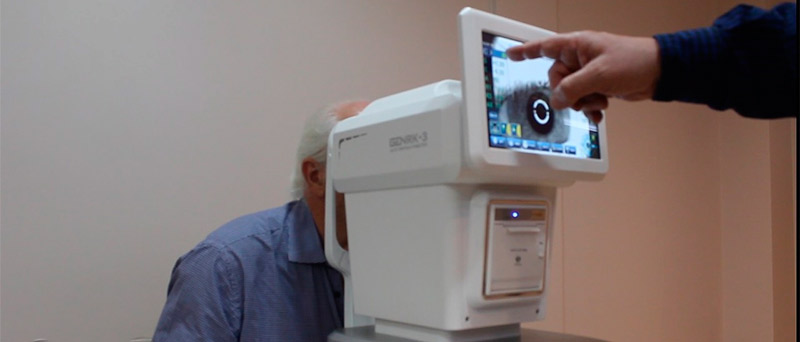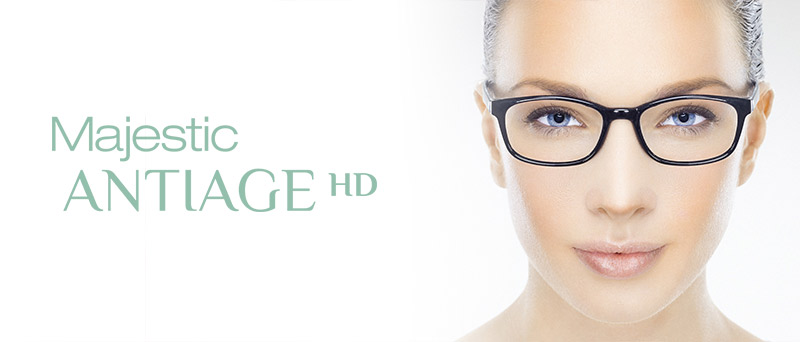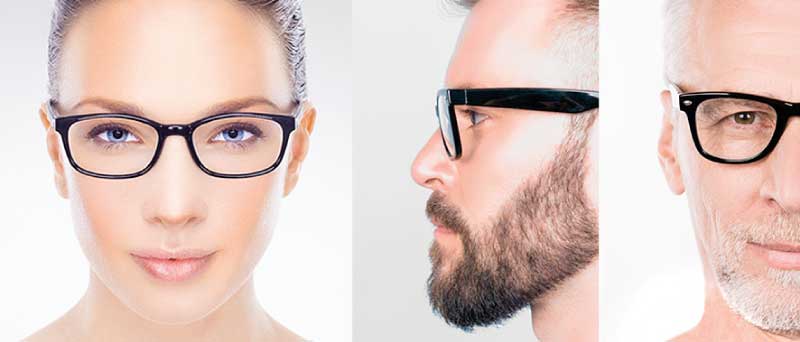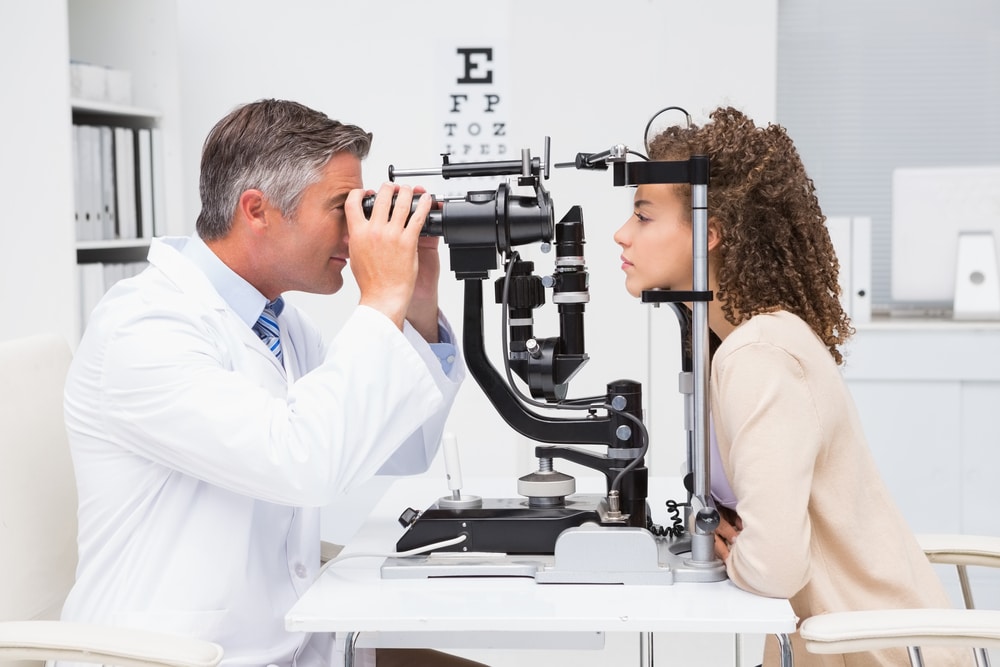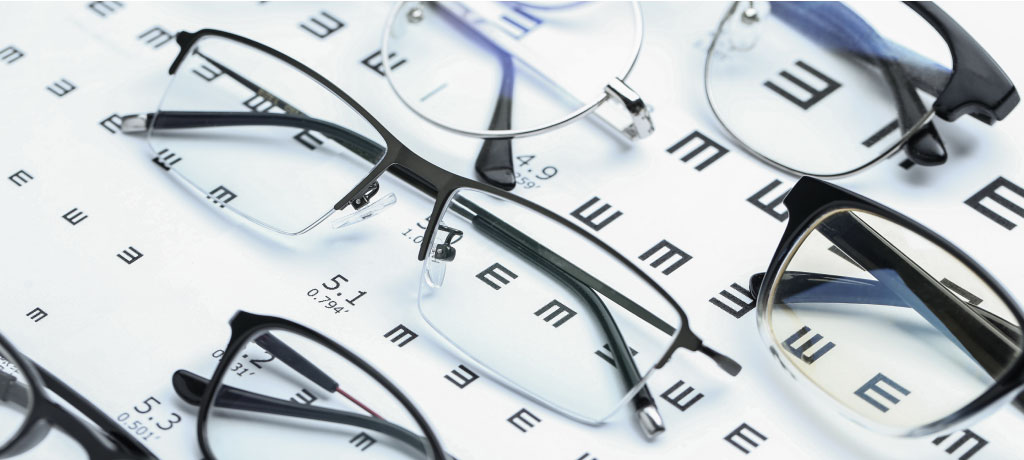In Pictures: See by yourself how Majestic Antiage HD is ready to delay the aging process
Nowadays it is common to be affected by climate change and global warming that impact the way we live in every single way. This also impacts our health in general and particularly, our vision health.
Fact is that Sun radiation is not properly filtered by Earth atmosphere, -among other natural and artificial causes-, just as it used to be in recent years, say 20 years ago. It causes several eye and skin diseases and, some of them, commonly related to aging.
In this context, Majestic Antiage HD lenses come into action. They are here for prevention by delaying the aging process in the skin around the eye; it’s about a new technology which is capable of filtering up to 50% of the infrared radiation going from 780 to 1200 nm in the electromagnetic spectrum, and the best part of it is that they are already available in US.
With this in mind, LATAM OPTICAL LLC team gathered up to show how Majestic Antiage HD lenses protect your eyes from all harmful emissions that we are constantly exposed to, by using the magic of a camera.
Just like a Sun screen lotion acts, the photos that you are about to see were taken by an adapted camera, ready to capture the ultraviolet and infrared electromagnetic spectrum both non-visible to the human eye.
As a result, images show how the higher the UV filter, the darker the lens looks; this is the reason why Majestic Antiage HD lenses look totally black in the images even when they are absolutely clear to the naked eye.
When exposed to InfraRed rays results might be different. It may occur that a lens could have an excellent UV filter, but it does not protect against IR at all. Our eye iris and lens -like the vast majority of prescription lenses and sunglasses, are both invisible to IR radiation. Every iris, no matter how dark its color, will be crystal clear to the IR spectrum. In this condition, Majestic Antiage HD works because it filters more than 50% of IR radiation by reflection; that’s the reason why in IR photos below, they look like mirrored solar ones instead of showing dark lenses.
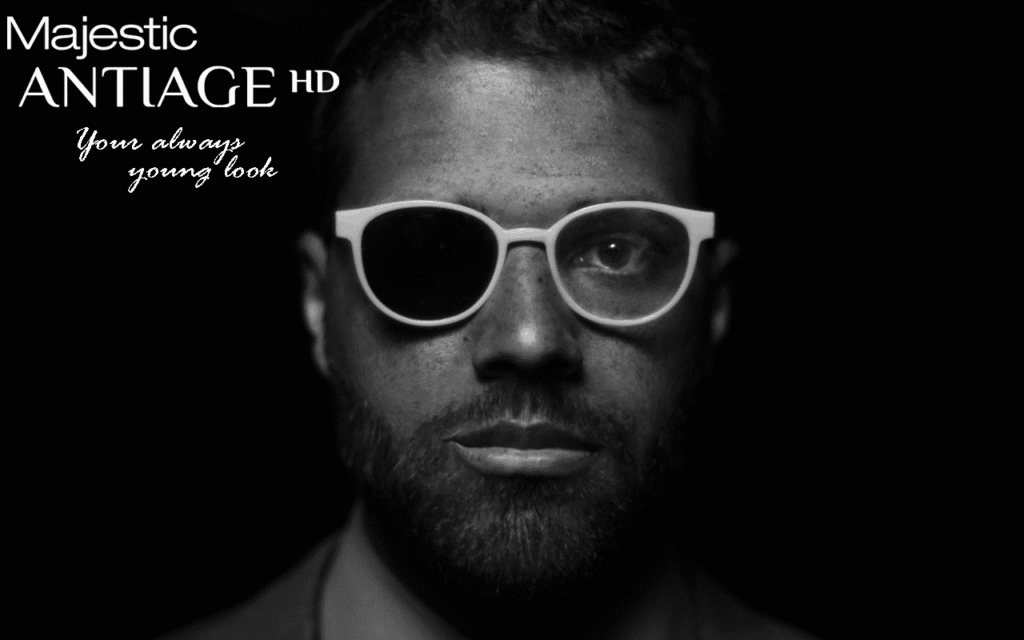
An image that speaks louder than words. This photo was taken with an UV camera. The frame has a Majestic Antiage HD plano lens (420nm cut-off) on the Right Eye and a traditional CR resin lens (355nm cut-off) on the Left Eye of the model. Although both lenses look equally transparent to the naked eye, Majestic Antiage HD is seen totally dark to the UV spectrum.
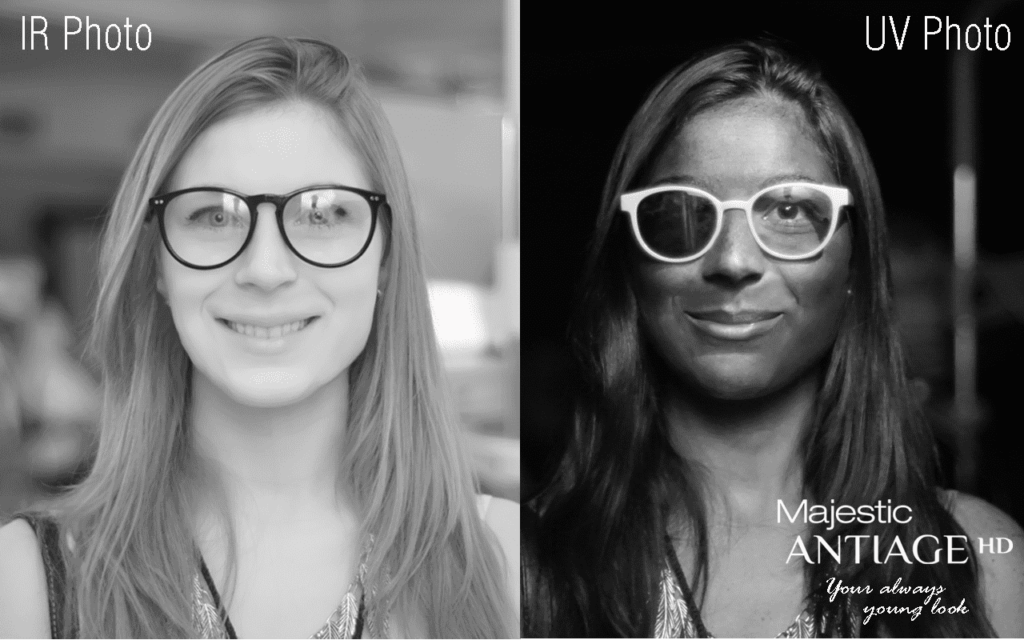
The image at your left shows our model wearing Grade 3 polarized sunglass lens, totally transparent for IR radiation. At your right, while wearing a skin protector, our model is showing that the Majestic Antiage HD lens on her Right Eye acts the same way her lotion does.
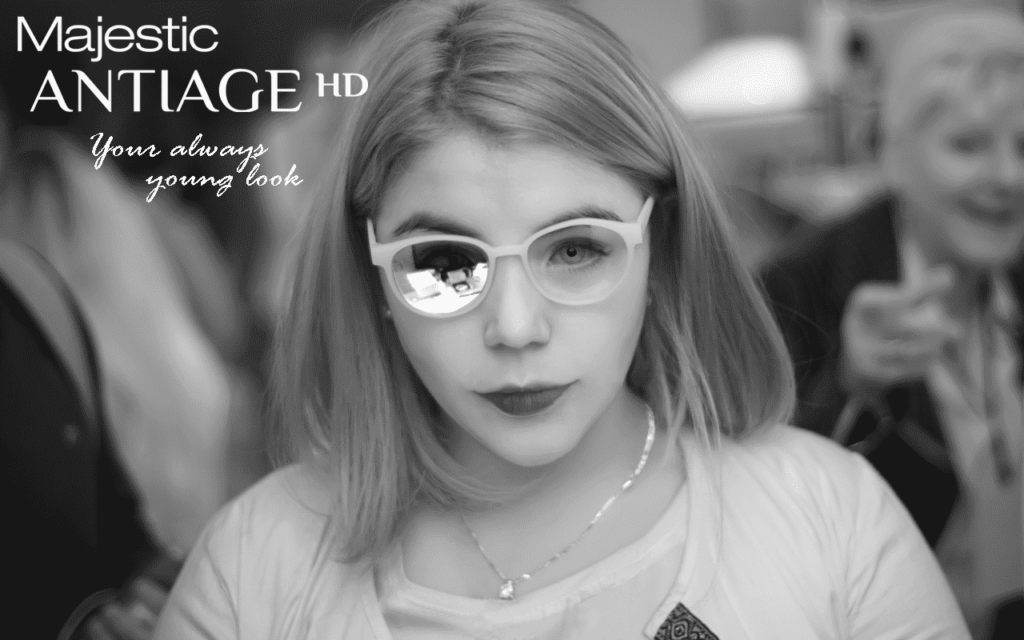
The frame has transparent lenses in both eyes, but the Right Eye lens is Majestic Antiage HD, filtering more than 50% of the near InfraRed radiation by reflection.
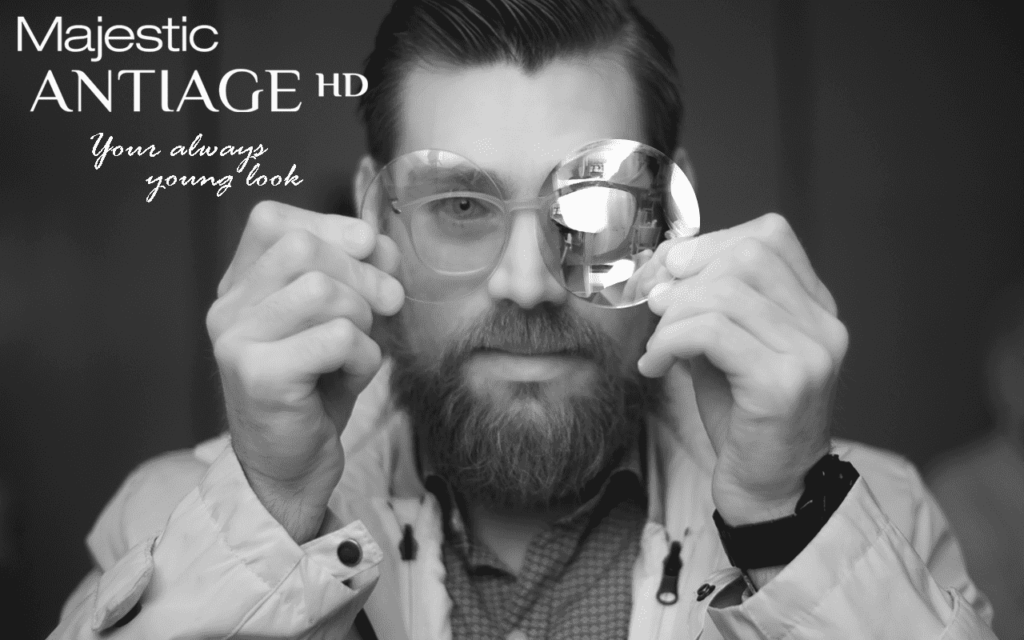
Here we can see how our model is placing a Majestic Antiage HD lens in front of his pair of glasses to see the difference when reflecting infrared radiation.
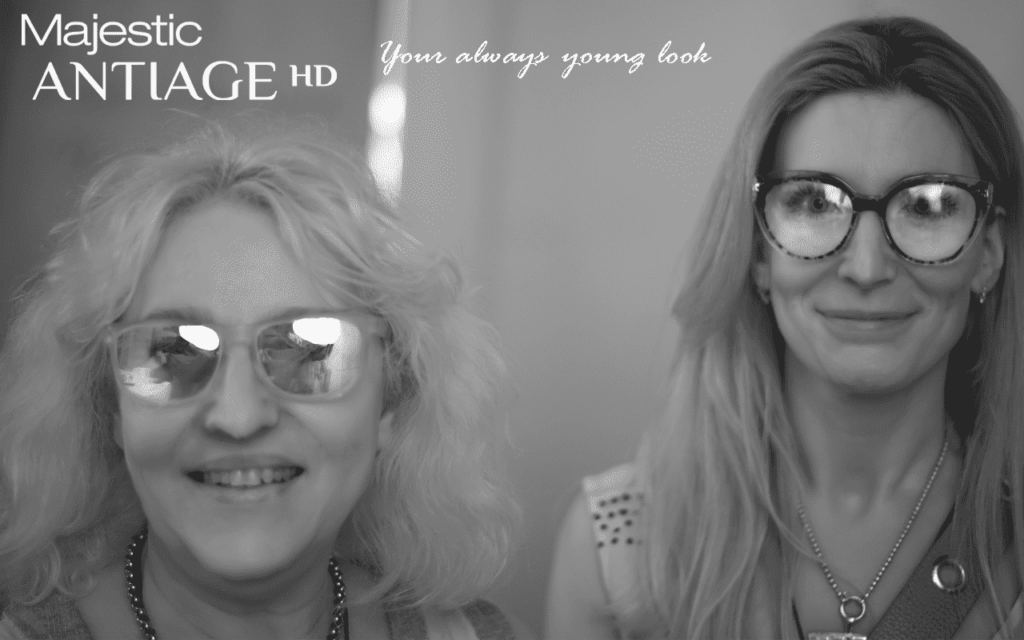
IR photo. Who is wearing sunglasses? Guess what… the person at your left is wearing a frame with totally clear Majestic Antiage HD lenses on it; while the person at your right is wearing polarized sunglasses (Grade 3 Gray) -a best seller brand on the market- which looks really transparent to an Infrared Camera. Surprisingly, uh?


